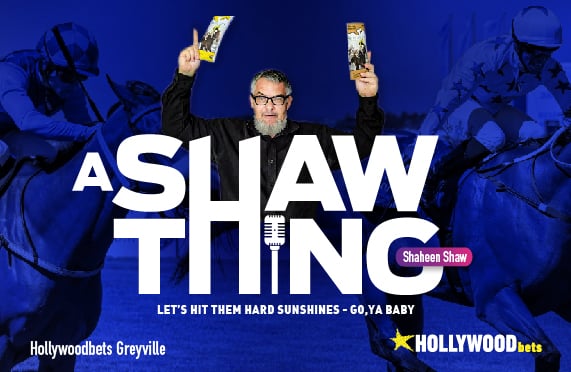“The greatness of a nation, and its moral progress can be judged by the way its animals are treated” – Mohandas Gandhi
The idea of hitting something to make it go faster is usually met with incredulity by non-racing folk (as is the idea of weighting down superior athletes. Imagine telling Usain Bolt to carry a lead pack! But that’s an argument for another time).
Whips remain the number one selling piece of equipment in tack shops. Sadly, whip use is stated as one of the biggest turn-offs to prospective new race goers as it is perceived that horses are beaten across the finish line. When one considers statements like the one from champion jockey Willy Carson in 1996 when he commented on his second placed ride on Alhaarth at Newmarket that ‘I gave him six cracks, and I wouldn’t like to lie down on that side tonight’, well, one can sort of see why.
While there are numerous arguments for whip use (mainly based on safety grounds), there is really very little scientific basis for this argument.
The RSPCA (Australia) recently commissioned a report into the use of the whip on race horses and how it affects their performance. The study was undertaken by two learned gentlemen of the Faculty of Veterinary Science at the University of Sydney – Associate Professor David Evans (BVSc, PhD) and Dr Paul McGreevy (BVSc, PhD, MRCVS, MACVS (Animal Welfare), Cert CABC, Grad Cert Higher Ed. RCVS Recognised Specialist in Veterinary Behavioural Medicine). The study was peer-reviewed and published in the Public Library of Science and I think their findings are really quite interesting.
To understand how it works in practice, it’s worth taking a closer look at the scientific definitions and explanations of learning theory and how we apply them to horses.
The Science Bit
There are two methods of teaching (or conditioning) a behavior – Classical conditioning and Operant conditioning and both of them work by way of association.
Classical conditioning (a phrase coined by Ivan Pavlov) is a learning process based on associations between a stimulus and a response. It starts with an environmental (or unconditioned) stimulus and a naturally occurring (also unconditioned) response (eg the smell of a steak on the braai making you feel hungry). Once the response to the stimulus is well established, one can add in a conditioned stimulus (eg ringing a bell at the same time as the meat goes on the fire) so that you can now trigger the unconditioned response with a conditioned trigger. Feeling hungry (unconditioned response) at the sound of the bell (conditioned stimulus) thus becomes a conditioned response. This can also be used in reverse. If you stop pairing the conditioned stimulus with the unconditioned response (ie stop ringing the bell at the same time as cooking the meat), the response will eventually cease (or be extinguished).
Operant conditioning (developed by the work of B F Skinner) is “active behavior that operates upon the environment to generate consequences” and is based on a system of reward and punishment. It is probably best illustrated with lab experiments where rats learn to press buttons for a food reward (or avoid other buttons to avoid an electric shock). It is operant conditioning that helps us acquire the range of learned behaviors we employ each and every day (for example, we know that if we put our bank card into the cash machine and punch in numbers in a certain order, we will receive cash). It is generally operant conditioning that we apply with horses.
Ok, I know this is getting a little complicated, but bear with me.
To teach a behavior, we use reinforcers (rewards) to increase a behavior or punishment to decrease the occurrence of a behavior. These tools can either be used positively (as in the mathematical version, where you add more), or negatively, where you take something away. So a positive reward would be creating a pleasant consequence to a behavior (ie patting or giving a horse a treat for producing a desired response) and a negative reward would be removing an unpleasant stimulus or consequence (eg. You stop kicking your horse with your legs or hitting it with your whip once it goes forward).
In the same fashion you also have positive and negative punishment. Positive punishment would be adding an unpleasant consequence to a behavior (ie hitting a horse when it misbehaves) in order to discourage that behavior in future. Negative punishment would be to remove something pleasant in response to a behavior (ie taking away a child’s toy if they misbehave).
How It Works
The study above reflects that whips are most frequently employed towards the end of a race.
Fatigue is a metabolic consequence of maximal exercise and caused by an accumulation of adenosinetriphosphate (ATP) and inorganic phosphates in muscles. Studies show that equine muscle fatigue ensues after approximately 800m of galloping at maximal velocity.
It follows that the general trend is to hit horses in the final stages of a race when they are starting to fatigue. Therefore hitting horses in the final stages of a race as they are trying to accelerate (or when they can no longer accelerate due to fatigue), is in fact counter-productive because the horse is effectively being punished for trying to accelerate. It follows that every time a horse runs and learns that it will be hit in the latter part of the race, it is gradually being discouraged to go any faster.
The study showed that horses achieved highest speeds when there was no whip use (this was usually in the first half of the race though). The study also showed that horses that were advantageously positioned by the 400m mark were most likely to finish in the first 3. Or to quote Dr Evans – “What we found was that whipping did not affect the probability of whether or not a horse finished a race in the first three placings. How a horse ran in the first part of a race, when it wasn’t being whipped, was the most critical factor in racing success.
In a separate study by Deuel and Lawrence on Quarter horses in 1987, they used high-speed cinematography to investigate gait characteristics whilst “urging” horses during gallops at 12.6 m/s. The experiment was based on the rider “goading the horse with a riding crop” on the leading shoulder at a frequency of once per stride. Their results seemed to indicate that while urging had no detectable effect on the average velocity (ie the speed), it did cause a significant increase in stride frequency and a decrease in stride length.
And in an Animal Aid study done in 2003, showed that the more often horses were whipped, the less chance they had of winning their races. In the final stages of a race, where whips are usually employed most often, it was found that they jockeys who used it the least, won the most frequently.
This does seem to be bourne out by comments from some fairly high profile jockeys. In 2006 Edgar Prado never touched Barbaro with his whip and never asked him to do anything more than was necessary. Prado said, “If he’s running real hard, why should he be punished?”
South African Douglas Whyte, Hong Kong’s leading rider and 10-time Champion Jockey is quoted as saying “I still believe I can get more out of a horse by encouraging them rather than punishing them. My job is to win the horse’s confidence and to get them to run to their best for me.”
I think it is also illustrated fairly clearly in good ‘hands and heels’ rides (such as JJ The Jet Plane’s recent Dubai win) where a horse is simply placed well early on and ridden skillfully all the way to the wire.
From a personal point of view, I can vouch that one of the hardest lessons to learn in competitive riding is that one often has to do less, sit more quietly, interfere less, in order to allow the horse to produce better results.
Whip specs
Although whips are still widely used we have fortunately come a long way since Mr Carson’s 1996 statement. The International Federation of Horseracing Authorities has published Minimum Standard Guidelines on Use Of The Whip which has been agreed to by a host of racing countries, including South Africa and there are now specific and formal rules governing the use of the whip to ensure that it is used for “safety, correction and encouragement only”. There are also strict rules as to accepted whip specifications and there has been a world-wide move towards a kinder, shock-absorbing design. In South Africa, the ProCush whip is the only crop approved for racing in South Africa in April 2009. I have tested these babies on myself and can vouch that they really are a lot more gentle than the versions I grew up with ! Some organizations have gone even further and the Norwegian Jockey Club has banned whips in all races other than qualifying races, two-year old races and in hurdle races. And in the cases where whips are allowed, the rules state that jockeys need to keep both hands on the reins for the duration of the race.
In Conclusion
A vociferous anti-whip campaigner is Californian horse whisperer, Monty Roberts. “A whip has no place in horsemanship at all,” argues Roberts. “It’s medieval for horses.” He also points out that a horse that wants to win, that has that competitive spirit and natural “will to win” is always going to be a far better racing prospect than the one that has to be beaten for half of the race.
Monty Roberts says that ‘As racehorse people, we often say we are giving the horse a chance to do what he loves best, run. I believe that is a true statement, but if it is what he loves best, why do we have to whip him to do it? We do not.’








